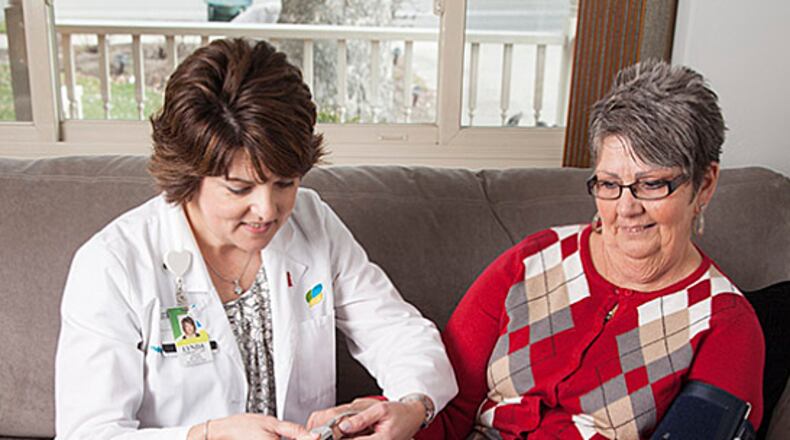Expand PACE Ohio, a coalition of providers serving elderly Ohioans, met with Dayton-region lawmakers recently to advocate for Ohio House Bill 600, which would use $50 million of ARPA funds be utilized to expand PACE throughout Ohio.
PACE uses medical and social services to help eligible seniors to stay and age in their homes, said Jeff Lycan, president/CEO of the National Hospice Cooperative at Ohio’s Hospice. Services include primary and specialty care, adult day health services, personal care services, inpatient hospital care, prescription drugs, occupational/physical therapies, and nursing home care, offered through a PACE-employed interdisciplinary team responsible for coordination of 24-hour care delivery.
“We want to help them live in their home, age in their home,” Lycan said. He said PACE enrollees typically have less hospitalizations and less emergency room visits.
“We can bring those services to them in a more efficient and effective way that allows them the support to stay in their home and live more safely as they are there,” Lycan said.
Eligible participants must be 55 and older who are eligible for Medicaid or dually eligible for Medicaid and Medicare. Participants must also be eligible to live in a nursing home but also able to live independently with access to PACE programs.
Ohio has the third largest PACE eligible population in the U.S., according to LeadingAge Ohio, a nonprofit trade association representing approximately 400 long-term care organizations and hospices.
Only 16% of eligible participants in Ohio live within the service area of a PACE provider, said Patrick Schwartz of LeadingAge Ohio.
“Right now, there is only one PACE site in the state of Ohio,” Schwartz said. PACE is only available to eligible individuals in Cuyahoga County through McGregor PACE.
Schwartz said the program offers improved health outcomes for participants, as well as comes at a cost-savings to the state. According to the coalition, the monthly rate for dual eligible (Medicaid and Medicare) PACE participants is $2,926, compared to a state Medicaid managed care plan’s monthly dual eligible rate of $4,048. The PACE dual eligible rate is $1,012 per member per month lower than the comparable rate for this state Medicaid managed care plan.
The PACE expansion was previously included in last year’s state Senate budget bill before being cut during the conference committee. The ARPA funds advocates are looking to use are funds set aside for home and community based services. Advocates are pushing for the approval of Ohio H.B. 600 during the lame duck sessions this fall.
Dayton-region legislators who met with the coalition during a roundtable discussion this week at Ohio’s Hospice of Dayton included state Senator Steve Huffman (R-Tipp City), state Senator Bob Hackett (R-London), state Rep. Phil Plummer (R- Dayton), state Rep. Tom Young (R-Washington Twp.), state Rep. Rodney Creech (R-West Alexandria), and state Rep. Andrea White (R-Kettering).
About the Author

